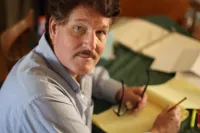"The Society that separates its Scholars from its Warriors, will have its thinking done by cowards and its fighting done by fools." Thucydides

PURPOSE: Become the Scholar Warrior for your Goals
Improve Every Single Day!
Improve Yourself 1% a Day = 3600%+ in a Year
Thought-Technique-Strategy of the Week:
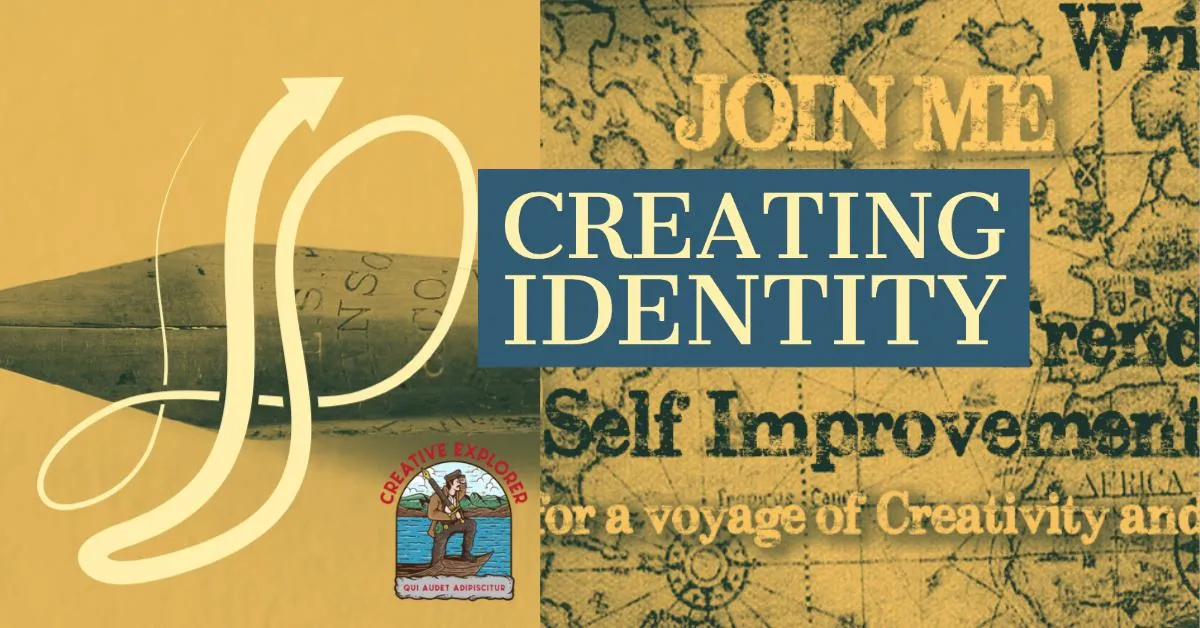
Create Your Powerful Identity
Let's say you wish to excel in the art of painting. Or open your own woodworking business. Or become a Filmmaker which I did many years ago. The key is to utilize a Powerful Identity in reframing your Focus. Let's stick with painter for the moment.
Use the words: "I am a painter." The powerful use of the "I am..." phrase welds this new outlook to you mentally, intellectually but, more importantly, emotionally. Why emotionally? When you talk about painting (or any very exciting goal), then you can feel the electrical excitement within your body and Being.
"Being" is the act of existing within this newly embraced identity. Then you grow and become.
READ THE MAIN ARTICLE HERE
7 Actions To Change Your Life
Michael's Kenpo Karate Weapons Form - Knife & Pistol
You can see my Pistol & Knife form at approximately 10:31 here in the video from 2010. This is at Bryan Hawkins Kenpo Karate where I have studied Kenpo Karate for approximately over 35 years. The form is one that I created to advance in the system, utilizing Kenpo Karate principles. I use the form with the primary weapon as the firearm, duly guarded and using the knife for close-in drills. This is the training the Warrior phase!
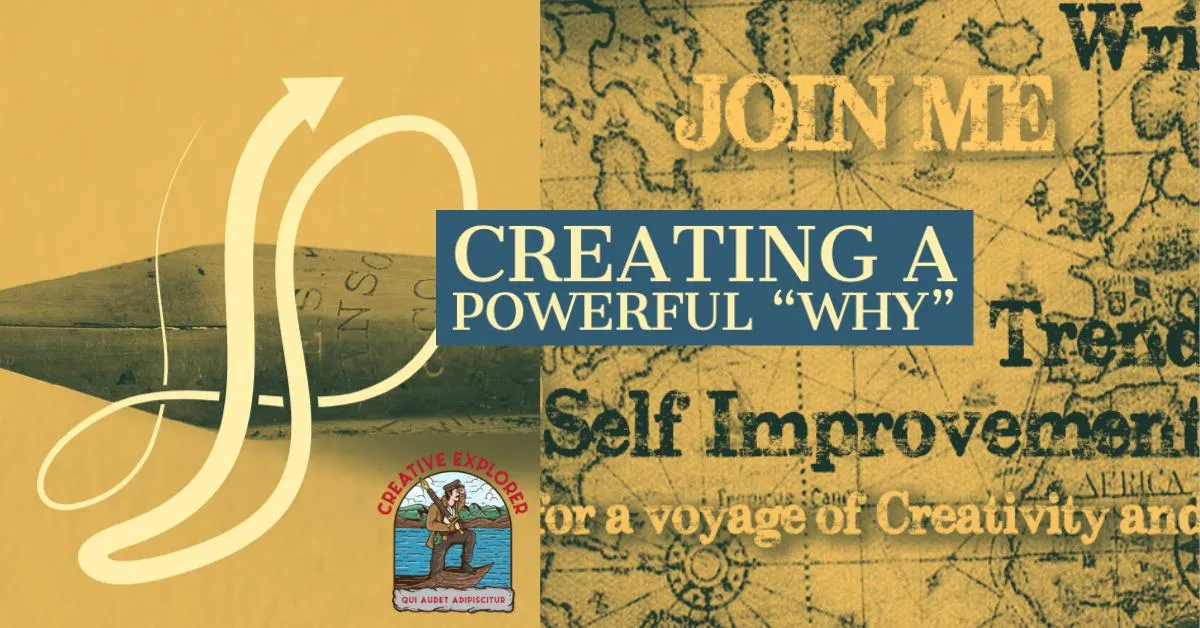


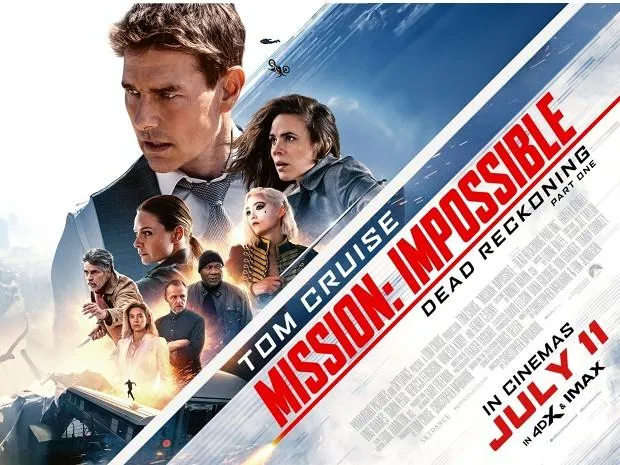
VFX Video: Mission Impossible Dead Reckoning
The Evolution of Visual Effects: From Forced Perspective to AI-Enhanced Realities in Filmmaking
Visual effects (VFX) have not just transformed how we experience movies; they have revolutionized the very art of storytelling. Over the last decade, VFX have evolved at a breakneck speed, morphing from the subtle use of forced perspectives – think the magical size illusions in Peter Jackson’s Lord of the Rings – to today's sophisticated AI creations that blend seamlessly with live-action. In this blog post, aimed at filmmakers and enthusiasts alike, we'll explore this incredible transformation and engage in a discussion about the nuanced role of VFX in cinema.
From Middle-earth to Machine Learning
The cinema of the early 2000s, such as Peter Jackson's epic The Lord of the Rings trilogy, made extensive use of forced perspective, a technique that creates an illusion of scale by positioning actors and objects within the same frame at strategically different distances from the camera. This old-school magic trick allowed characters like Gandalf and Frodo to appear vastly different in size, despite being filmed together in the same shot.
Fast forward to the present day, and VFX is harnessing the power of artificial intelligence to create effects that were once thought impossible. Machine learning algorithms now assist in everything from character creation to scene composition, allowing for the detailed simulation of physical realities that push the boundaries of the audience’s imagination.
Emotional Connectivity in the Age of Spectacle
A key point of discussion concerns the balance VFX must strike between awe-inspiring spectacle and emotional resonance. The question is, how do filmmakers ensure that VFX do not overpower the human element, the authentic connection that audiences seek with characters and their journeys?
Filmmakers are now acknowledging that while stunning visuals are important, they must serve to deepen the narrative, not overshadow it. VFX should aspire to enrich the emotional fabric of the story. What good is a colossal explosion or a fantastically rendered creature if it doesn’t contribute to the viewer's emotional investment in the characters or the plot?
Discerning Audiences and the Quest for Authentic Connection
Today's audiences are more astute than ever. The CGI tide has carried us to a juncture where viewers can almost instantaneously discern between VFX that enhances a story and those that are included merely for visual titillation. They yearn for stories that weave VFX into the actual human drama and not just as impressive, yet empty, visual feats.
For instance, the somewhat extravagant uses of CGI in past blockbusters, though visually impressive, have often been criticized for lacking substance, for creating spectacles that disengage the audience from a deeper narrative experience. A glitzy VFX sequence devoid of emotional depth may wow the crowd momentarily, but it seldom leaves a lasting influence.
Conclusion
The tools at our disposal as filmmakers have never been more powerful or more capable of bringing our wildest visions to life. But they come with a responsibility. We must ask ourselves whether the VFX serve the story and help convey its emotional heart. Does it help the audience forge a stronger connection with the characters onscreen?
We invite you to share your thoughts on this evolution.
How do you think you can strike the perfect balance between VFX and narrative?
Have you experienced moments when VFX took you out of the story rather than drawing you in?
In what ways can VFX be employed to genuinely engage audiences in the story?
Filmmaking is, after all, the art of visual storytelling, and VFX are among the most vibrant colors in our palette. It's up to us, the filmmakers, to use these colors judiciously, enhancing the essence of our stories and cementing the emotional connections that bind audiences to our creations.

VFX Video: Mission Impossible Dead Reckoning
The Evolution of Visual Effects: From Forced Perspective to AI-Enhanced Realities in Filmmaking
Visual effects (VFX) have not just transformed how we experience movies; they have revolutionized the very art of storytelling. Over the last decade, VFX have evolved at a breakneck speed, morphing from the subtle use of forced perspectives – think the magical size illusions in Peter Jackson’s Lord of the Rings – to today's sophisticated AI creations that blend seamlessly with live-action. In this blog post, aimed at filmmakers and enthusiasts alike, we'll explore this incredible transformation and engage in a discussion about the nuanced role of VFX in cinema.
From Middle-earth to Machine Learning
The cinema of the early 2000s, such as Peter Jackson's epic The Lord of the Rings trilogy, made extensive use of forced perspective, a technique that creates an illusion of scale by positioning actors and objects within the same frame at strategically different distances from the camera. This old-school magic trick allowed characters like Gandalf and Frodo to appear vastly different in size, despite being filmed together in the same shot.
Fast forward to the present day, and VFX is harnessing the power of artificial intelligence to create effects that were once thought impossible. Machine learning algorithms now assist in everything from character creation to scene composition, allowing for the detailed simulation of physical realities that push the boundaries of the audience’s imagination.
Emotional Connectivity in the Age of Spectacle
A key point of discussion concerns the balance VFX must strike between awe-inspiring spectacle and emotional resonance. The question is, how do filmmakers ensure that VFX do not overpower the human element, the authentic connection that audiences seek with characters and their journeys?
Filmmakers are now acknowledging that while stunning visuals are important, they must serve to deepen the narrative, not overshadow it. VFX should aspire to enrich the emotional fabric of the story. What good is a colossal explosion or a fantastically rendered creature if it doesn’t contribute to the viewer's emotional investment in the characters or the plot?
Discerning Audiences and the Quest for Authentic Connection
Today's audiences are more astute than ever. The CGI tide has carried us to a juncture where viewers can almost instantaneously discern between VFX that enhances a story and those that are included merely for visual titillation. They yearn for stories that weave VFX into the actual human drama and not just as impressive, yet empty, visual feats.
For instance, the somewhat extravagant uses of CGI in past blockbusters, though visually impressive, have often been criticized for lacking substance, for creating spectacles that disengage the audience from a deeper narrative experience. A glitzy VFX sequence devoid of emotional depth may wow the crowd momentarily, but it seldom leaves a lasting influence.
Conclusion
The tools at our disposal as filmmakers have never been more powerful or more capable of bringing our wildest visions to life. But they come with a responsibility. We must ask ourselves whether the VFX serve the story and help convey its emotional heart. Does it help the audience forge a stronger connection with the characters onscreen?
We invite you to share your thoughts on this evolution.
How do you think you can strike the perfect balance between VFX and narrative?
Have you experienced moments when VFX took you out of the story rather than drawing you in?
In what ways can VFX be employed to genuinely engage audiences in the story?
Filmmaking is, after all, the art of visual storytelling, and VFX are among the most vibrant colors in our palette. It's up to us, the filmmakers, to use these colors judiciously, enhancing the essence of our stories and cementing the emotional connections that bind audiences to our creations.

VFX Video: Mission Impossible Dead Reckoning
The Evolution of Visual Effects: From Forced Perspective to AI-Enhanced Realities in Filmmaking
Visual effects (VFX) have not just transformed how we experience movies; they have revolutionized the very art of storytelling. Over the last decade, VFX have evolved at a breakneck speed, morphing from the subtle use of forced perspectives – think the magical size illusions in Peter Jackson’s Lord of the Rings – to today's sophisticated AI creations that blend seamlessly with live-action. In this blog post, aimed at filmmakers and enthusiasts alike, we'll explore this incredible transformation and engage in a discussion about the nuanced role of VFX in cinema.
From Middle-earth to Machine Learning
The cinema of the early 2000s, such as Peter Jackson's epic The Lord of the Rings trilogy, made extensive use of forced perspective, a technique that creates an illusion of scale by positioning actors and objects within the same frame at strategically different distances from the camera. This old-school magic trick allowed characters like Gandalf and Frodo to appear vastly different in size, despite being filmed together in the same shot.
Fast forward to the present day, and VFX is harnessing the power of artificial intelligence to create effects that were once thought impossible. Machine learning algorithms now assist in everything from character creation to scene composition, allowing for the detailed simulation of physical realities that push the boundaries of the audience’s imagination.
Emotional Connectivity in the Age of Spectacle
A key point of discussion concerns the balance VFX must strike between awe-inspiring spectacle and emotional resonance. The question is, how do filmmakers ensure that VFX do not overpower the human element, the authentic connection that audiences seek with characters and their journeys?
Filmmakers are now acknowledging that while stunning visuals are important, they must serve to deepen the narrative, not overshadow it. VFX should aspire to enrich the emotional fabric of the story. What good is a colossal explosion or a fantastically rendered creature if it doesn’t contribute to the viewer's emotional investment in the characters or the plot?
Discerning Audiences and the Quest for Authentic Connection
Today's audiences are more astute than ever. The CGI tide has carried us to a juncture where viewers can almost instantaneously discern between VFX that enhances a story and those that are included merely for visual titillation. They yearn for stories that weave VFX into the actual human drama and not just as impressive, yet empty, visual feats.
For instance, the somewhat extravagant uses of CGI in past blockbusters, though visually impressive, have often been criticized for lacking substance, for creating spectacles that disengage the audience from a deeper narrative experience. A glitzy VFX sequence devoid of emotional depth may wow the crowd momentarily, but it seldom leaves a lasting influence.
Conclusion
The tools at our disposal as filmmakers have never been more powerful or more capable of bringing our wildest visions to life. But they come with a responsibility. We must ask ourselves whether the VFX serve the story and help convey its emotional heart. Does it help the audience forge a stronger connection with the characters onscreen?
We invite you to share your thoughts on this evolution.
How do you think you can strike the perfect balance between VFX and narrative?
Have you experienced moments when VFX took you out of the story rather than drawing you in?
In what ways can VFX be employed to genuinely engage audiences in the story?
Filmmaking is, after all, the art of visual storytelling, and VFX are among the most vibrant colors in our palette. It's up to us, the filmmakers, to use these colors judiciously, enhancing the essence of our stories and cementing the emotional connections that bind audiences to our creations.

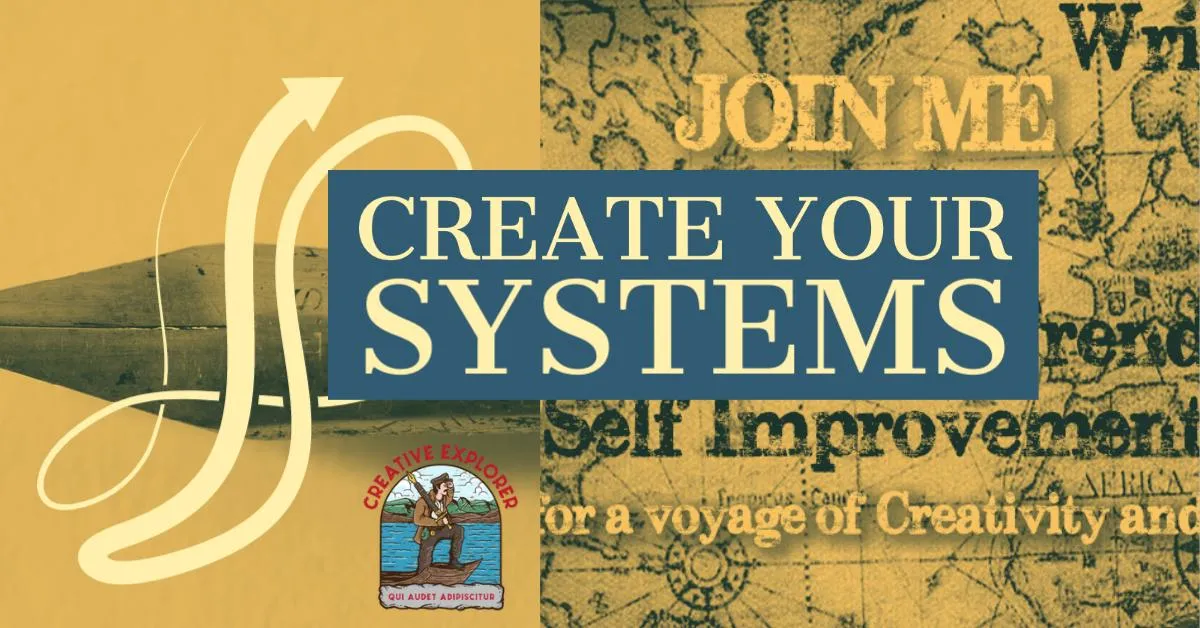
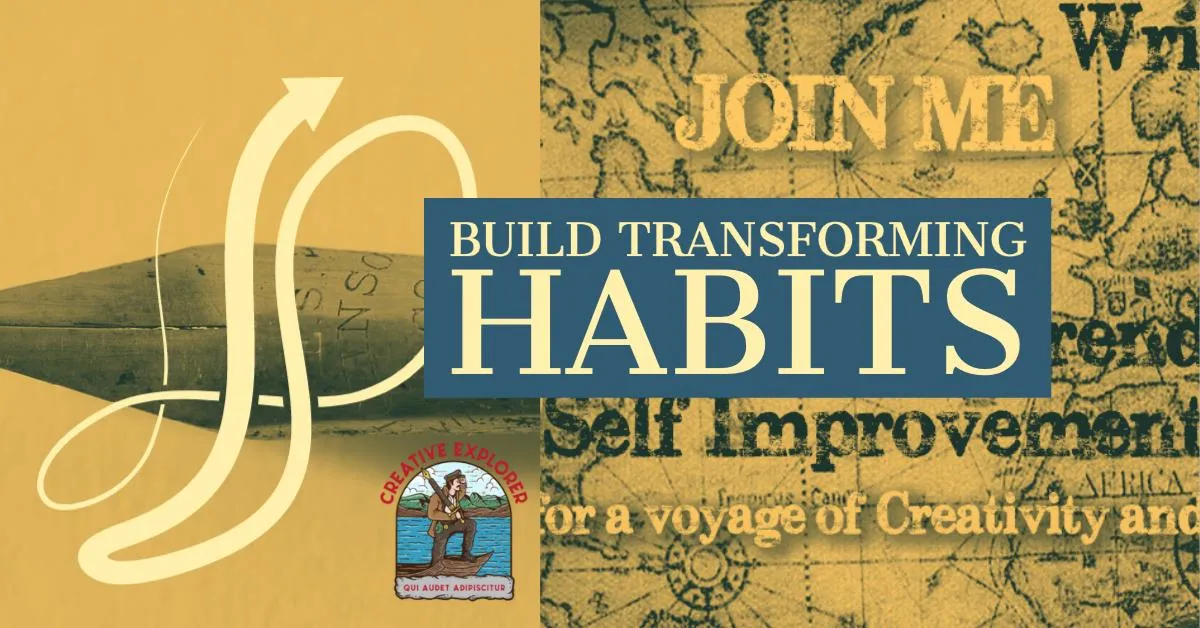


VFX Video: Mission Impossible Dead Reckoning
The Evolution of Visual Effects: From Forced Perspective to AI-Enhanced Realities in Filmmaking
Visual effects (VFX) have not just transformed how we experience movies; they have revolutionized the very art of storytelling. Over the last decade, VFX have evolved at a breakneck speed, morphing from the subtle use of forced perspectives – think the magical size illusions in Peter Jackson’s Lord of the Rings – to today's sophisticated AI creations that blend seamlessly with live-action. In this blog post, aimed at filmmakers and enthusiasts alike, we'll explore this incredible transformation and engage in a discussion about the nuanced role of VFX in cinema.
From Middle-earth to Machine Learning
The cinema of the early 2000s, such as Peter Jackson's epic The Lord of the Rings trilogy, made extensive use of forced perspective, a technique that creates an illusion of scale by positioning actors and objects within the same frame at strategically different distances from the camera. This old-school magic trick allowed characters like Gandalf and Frodo to appear vastly different in size, despite being filmed together in the same shot.
Fast forward to the present day, and VFX is harnessing the power of artificial intelligence to create effects that were once thought impossible. Machine learning algorithms now assist in everything from character creation to scene composition, allowing for the detailed simulation of physical realities that push the boundaries of the audience’s imagination.
Emotional Connectivity in the Age of Spectacle
A key point of discussion concerns the balance VFX must strike between awe-inspiring spectacle and emotional resonance. The question is, how do filmmakers ensure that VFX do not overpower the human element, the authentic connection that audiences seek with characters and their journeys?
Filmmakers are now acknowledging that while stunning visuals are important, they must serve to deepen the narrative, not overshadow it. VFX should aspire to enrich the emotional fabric of the story. What good is a colossal explosion or a fantastically rendered creature if it doesn’t contribute to the viewer's emotional investment in the characters or the plot?
Discerning Audiences and the Quest for Authentic Connection
Today's audiences are more astute than ever. The CGI tide has carried us to a juncture where viewers can almost instantaneously discern between VFX that enhances a story and those that are included merely for visual titillation. They yearn for stories that weave VFX into the actual human drama and not just as impressive, yet empty, visual feats.
For instance, the somewhat extravagant uses of CGI in past blockbusters, though visually impressive, have often been criticized for lacking substance, for creating spectacles that disengage the audience from a deeper narrative experience. A glitzy VFX sequence devoid of emotional depth may wow the crowd momentarily, but it seldom leaves a lasting influence.
Conclusion
The tools at our disposal as filmmakers have never been more powerful or more capable of bringing our wildest visions to life. But they come with a responsibility. We must ask ourselves whether the VFX serve the story and help convey its emotional heart. Does it help the audience forge a stronger connection with the characters onscreen?
We invite you to share your thoughts on this evolution.
How do you think you can strike the perfect balance between VFX and narrative?
Have you experienced moments when VFX took you out of the story rather than drawing you in?
In what ways can VFX be employed to genuinely engage audiences in the story?
Filmmaking is, after all, the art of visual storytelling, and VFX are among the most vibrant colors in our palette. It's up to us, the filmmakers, to use these colors judiciously, enhancing the essence of our stories and cementing the emotional connections that bind audiences to our creations.

VFX Video: Mission Impossible Dead Reckoning
The Evolution of Visual Effects: From Forced Perspective to AI-Enhanced Realities in Filmmaking
Visual effects (VFX) have not just transformed how we experience movies; they have revolutionized the very art of storytelling. Over the last decade, VFX have evolved at a breakneck speed, morphing from the subtle use of forced perspectives – think the magical size illusions in Peter Jackson’s Lord of the Rings – to today's sophisticated AI creations that blend seamlessly with live-action. In this blog post, aimed at filmmakers and enthusiasts alike, we'll explore this incredible transformation and engage in a discussion about the nuanced role of VFX in cinema.
From Middle-earth to Machine Learning
The cinema of the early 2000s, such as Peter Jackson's epic The Lord of the Rings trilogy, made extensive use of forced perspective, a technique that creates an illusion of scale by positioning actors and objects within the same frame at strategically different distances from the camera. This old-school magic trick allowed characters like Gandalf and Frodo to appear vastly different in size, despite being filmed together in the same shot.
Fast forward to the present day, and VFX is harnessing the power of artificial intelligence to create effects that were once thought impossible. Machine learning algorithms now assist in everything from character creation to scene composition, allowing for the detailed simulation of physical realities that push the boundaries of the audience’s imagination.
Emotional Connectivity in the Age of Spectacle
A key point of discussion concerns the balance VFX must strike between awe-inspiring spectacle and emotional resonance. The question is, how do filmmakers ensure that VFX do not overpower the human element, the authentic connection that audiences seek with characters and their journeys?
Filmmakers are now acknowledging that while stunning visuals are important, they must serve to deepen the narrative, not overshadow it. VFX should aspire to enrich the emotional fabric of the story. What good is a colossal explosion or a fantastically rendered creature if it doesn’t contribute to the viewer's emotional investment in the characters or the plot?
Discerning Audiences and the Quest for Authentic Connection
Today's audiences are more astute than ever. The CGI tide has carried us to a juncture where viewers can almost instantaneously discern between VFX that enhances a story and those that are included merely for visual titillation. They yearn for stories that weave VFX into the actual human drama and not just as impressive, yet empty, visual feats.
For instance, the somewhat extravagant uses of CGI in past blockbusters, though visually impressive, have often been criticized for lacking substance, for creating spectacles that disengage the audience from a deeper narrative experience. A glitzy VFX sequence devoid of emotional depth may wow the crowd momentarily, but it seldom leaves a lasting influence.
Conclusion
The tools at our disposal as filmmakers have never been more powerful or more capable of bringing our wildest visions to life. But they come with a responsibility. We must ask ourselves whether the VFX serve the story and help convey its emotional heart. Does it help the audience forge a stronger connection with the characters onscreen?
We invite you to share your thoughts on this evolution.
How do you think you can strike the perfect balance between VFX and narrative?
Have you experienced moments when VFX took you out of the story rather than drawing you in?
In what ways can VFX be employed to genuinely engage audiences in the story?
Filmmaking is, after all, the art of visual storytelling, and VFX are among the most vibrant colors in our palette. It's up to us, the filmmakers, to use these colors judiciously, enhancing the essence of our stories and cementing the emotional connections that bind audiences to our creations.

VFX Video: Mission Impossible Dead Reckoning
The Evolution of Visual Effects: From Forced Perspective to AI-Enhanced Realities in Filmmaking
Visual effects (VFX) have not just transformed how we experience movies; they have revolutionized the very art of storytelling. Over the last decade, VFX have evolved at a breakneck speed, morphing from the subtle use of forced perspectives – think the magical size illusions in Peter Jackson’s Lord of the Rings – to today's sophisticated AI creations that blend seamlessly with live-action. In this blog post, aimed at filmmakers and enthusiasts alike, we'll explore this incredible transformation and engage in a discussion about the nuanced role of VFX in cinema.
From Middle-earth to Machine Learning
The cinema of the early 2000s, such as Peter Jackson's epic The Lord of the Rings trilogy, made extensive use of forced perspective, a technique that creates an illusion of scale by positioning actors and objects within the same frame at strategically different distances from the camera. This old-school magic trick allowed characters like Gandalf and Frodo to appear vastly different in size, despite being filmed together in the same shot.
Fast forward to the present day, and VFX is harnessing the power of artificial intelligence to create effects that were once thought impossible. Machine learning algorithms now assist in everything from character creation to scene composition, allowing for the detailed simulation of physical realities that push the boundaries of the audience’s imagination.
Emotional Connectivity in the Age of Spectacle
A key point of discussion concerns the balance VFX must strike between awe-inspiring spectacle and emotional resonance. The question is, how do filmmakers ensure that VFX do not overpower the human element, the authentic connection that audiences seek with characters and their journeys?
Filmmakers are now acknowledging that while stunning visuals are important, they must serve to deepen the narrative, not overshadow it. VFX should aspire to enrich the emotional fabric of the story. What good is a colossal explosion or a fantastically rendered creature if it doesn’t contribute to the viewer's emotional investment in the characters or the plot?
Discerning Audiences and the Quest for Authentic Connection
Today's audiences are more astute than ever. The CGI tide has carried us to a juncture where viewers can almost instantaneously discern between VFX that enhances a story and those that are included merely for visual titillation. They yearn for stories that weave VFX into the actual human drama and not just as impressive, yet empty, visual feats.
For instance, the somewhat extravagant uses of CGI in past blockbusters, though visually impressive, have often been criticized for lacking substance, for creating spectacles that disengage the audience from a deeper narrative experience. A glitzy VFX sequence devoid of emotional depth may wow the crowd momentarily, but it seldom leaves a lasting influence.
Conclusion
The tools at our disposal as filmmakers have never been more powerful or more capable of bringing our wildest visions to life. But they come with a responsibility. We must ask ourselves whether the VFX serve the story and help convey its emotional heart. Does it help the audience forge a stronger connection with the characters onscreen?
We invite you to share your thoughts on this evolution.
How do you think you can strike the perfect balance between VFX and narrative?
Have you experienced moments when VFX took you out of the story rather than drawing you in?
In what ways can VFX be employed to genuinely engage audiences in the story?
Filmmaking is, after all, the art of visual storytelling, and VFX are among the most vibrant colors in our palette. It's up to us, the filmmakers, to use these colors judiciously, enhancing the essence of our stories and cementing the emotional connections that bind audiences to our creations.

VFX Video: Mission Impossible Dead Reckoning
The Evolution of Visual Effects: From Forced Perspective to AI-Enhanced Realities in Filmmaking
Visual effects (VFX) have not just transformed how we experience movies; they have revolutionized the very art of storytelling. Over the last decade, VFX have evolved at a breakneck speed, morphing from the subtle use of forced perspectives – think the magical size illusions in Peter Jackson’s Lord of the Rings – to today's sophisticated AI creations that blend seamlessly with live-action. In this blog post, aimed at filmmakers and enthusiasts alike, we'll explore this incredible transformation and engage in a discussion about the nuanced role of VFX in cinema.
From Middle-earth to Machine Learning
The cinema of the early 2000s, such as Peter Jackson's epic The Lord of the Rings trilogy, made extensive use of forced perspective, a technique that creates an illusion of scale by positioning actors and objects within the same frame at strategically different distances from the camera. This old-school magic trick allowed characters like Gandalf and Frodo to appear vastly different in size, despite being filmed together in the same shot.
Fast forward to the present day, and VFX is harnessing the power of artificial intelligence to create effects that were once thought impossible. Machine learning algorithms now assist in everything from character creation to scene composition, allowing for the detailed simulation of physical realities that push the boundaries of the audience’s imagination.
Emotional Connectivity in the Age of Spectacle
A key point of discussion concerns the balance VFX must strike between awe-inspiring spectacle and emotional resonance. The question is, how do filmmakers ensure that VFX do not overpower the human element, the authentic connection that audiences seek with characters and their journeys?
Filmmakers are now acknowledging that while stunning visuals are important, they must serve to deepen the narrative, not overshadow it. VFX should aspire to enrich the emotional fabric of the story. What good is a colossal explosion or a fantastically rendered creature if it doesn’t contribute to the viewer's emotional investment in the characters or the plot?
Discerning Audiences and the Quest for Authentic Connection
Today's audiences are more astute than ever. The CGI tide has carried us to a juncture where viewers can almost instantaneously discern between VFX that enhances a story and those that are included merely for visual titillation. They yearn for stories that weave VFX into the actual human drama and not just as impressive, yet empty, visual feats.
For instance, the somewhat extravagant uses of CGI in past blockbusters, though visually impressive, have often been criticized for lacking substance, for creating spectacles that disengage the audience from a deeper narrative experience. A glitzy VFX sequence devoid of emotional depth may wow the crowd momentarily, but it seldom leaves a lasting influence.
Conclusion
The tools at our disposal as filmmakers have never been more powerful or more capable of bringing our wildest visions to life. But they come with a responsibility. We must ask ourselves whether the VFX serve the story and help convey its emotional heart. Does it help the audience forge a stronger connection with the characters onscreen?
We invite you to share your thoughts on this evolution.
How do you think you can strike the perfect balance between VFX and narrative?
Have you experienced moments when VFX took you out of the story rather than drawing you in?
In what ways can VFX be employed to genuinely engage audiences in the story?
Filmmaking is, after all, the art of visual storytelling, and VFX are among the most vibrant colors in our palette. It's up to us, the filmmakers, to use these colors judiciously, enhancing the essence of our stories and cementing the emotional connections that bind audiences to our creations.
Take Action Today!
SCHOLAR WARRIOR WAY - COURSES
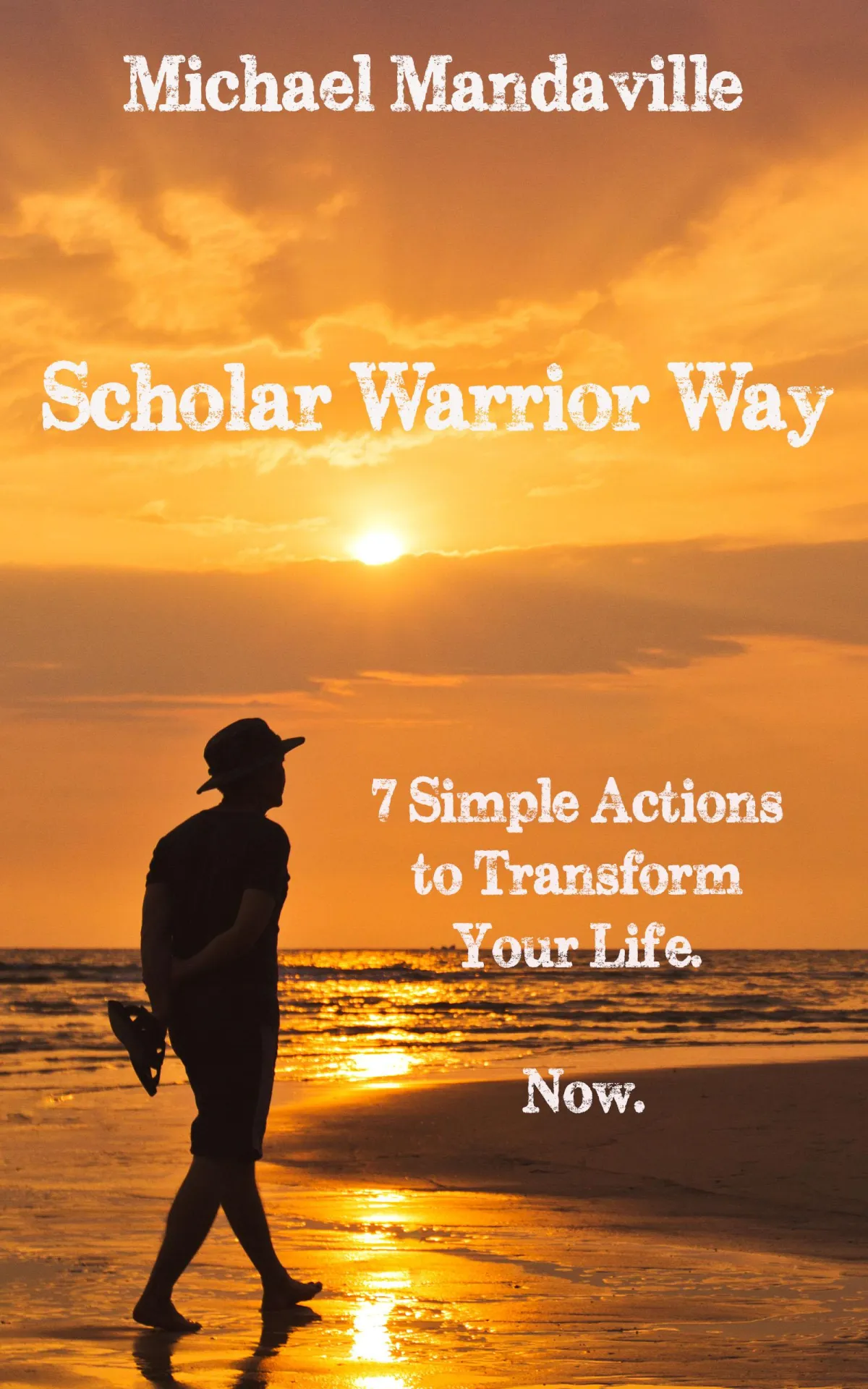
Scholar Warrior Way
Take Action to Transform Yourself
By taking the Scholar Warrior Way Course, you will get Michael's program for Self-Improvement in his pursuit of Creative Excellence in Writing, Filmmaking, Martial arts and his other pursuits from his major curious outlook. Here are the 7 Steps that he uses....
Powerful Why - the Key to Enthusiasm and Fulfillment
Scholar Warrior Identity - Embracing the new Mentality - now!
Your Morning Routine - Starting the day Right.
Brainstorming Your How - Strategy thinking and tactics
Create Your Own Systems - Become efficient with predictable results
Building Transforming Habits - Habit creates Destiny
The Art of Sleep - Long ignored but a necessary health break.
Levels 1, 2 and 3 - Detailing and add more videos, wisdom, resources and Learning Materials for your Growth and Self-Improvement.
FAQS
What is The Purpose of the "ScholarWarriorWay" ?
By engaging in the mental perspective of the Scholar Warrior, you embrace two aspects of your life: The Scholar with a constant focus on self-development and self-improvement. The Warrior whereby you learn techniques about courage, action and derring-do to achieve your true authentic goals for a fulfilled life.
How much does Scholar Warrior Way cost?
The cost of could be absolutely no money if you just want to get on our newsletter to read the various articles on the website. If you want to take the courses on various levels, then you might spend $200-300 per year. Think of it this way: If you could improve yourself 100-200-300-1000-3600% in a single year, then how much is it worth? The price of two meals and drinks at a restaurant that you'll never remember? Make a better life choice.
How do I know I work with the ScholarWarriorWay?
ScholarWarriorWay is broken down into 7 Major Strategies. You can pick one and work on it for a few weeks, then add another strategies. They start with the Powerful Why and end with the Art of Sleep.

